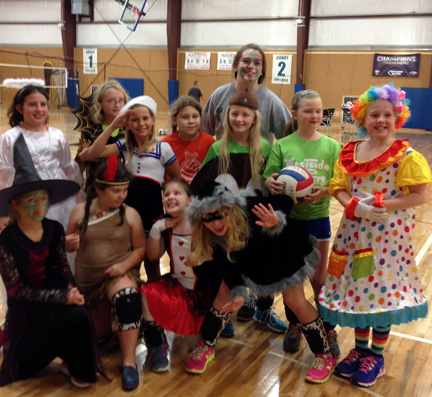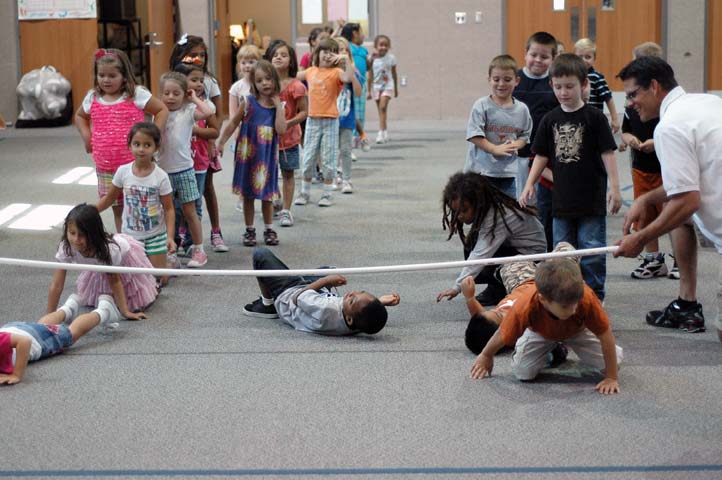

At Spike Frog, we are all about the athletes and a positive experience for all. We are extremely appreciative for the time and energy that our volunteer coaches invest in our young athletes and for being positive role models that foster a love for the game along with opportunities to build self-confidence.
We offer on-court training to our volunteer league coaches prior to every season. Our League Director, Coach Dave Taylor trains our volunteer coaches and assistants. Training includes teaching proper mechanics of the important basic skills for different age levels based on the USA Volleyball methods, planning and running a good practice, keeping it fun to foster a love for the game, and the importance of encouraging young athletes to ‘Dare Mighty Things’.
If you are interested in coaching with Spike Frog:
1. Complete the Volunteer Coach Application
2. Volunteer Coaches over the age of 18 are required to complete and pass a background check through Spike Frog every 2 years.
3. Mark your calendar and attend the Coaches Training Session
We have plenty of tools to help you throughout the season, including full-blown practice plans and drill videos.
Here are a few goals to keep in mind while you coach:
1. The best way to learn how to play volleyball is to play volleyball.
2. Choose to play over winning.
3. Just as you would expect from a classroom teacher, coaches need to challenge all players on the team.
Read on for more information on our philosophy around these 3 important goals.
1. The best way to learn how to play volleyball is to play volleyball.
Play more, talk less. This is good news for you as the coach because cannot be taught in one sitting. Give the players a few simple pointers and then have them try it out. Don’t expect them to get the hang of everything all at once; praise one step at a time. For example, when learning to pass for the first time, you may want to praise players for simply holding their hands together correctly even if their passes are flying off in all directions. At a more advanced stage, you may be praising how well players “shuffle” to get to the ball or how well they angle their shoulders for a perfect pass.
Play more, stand less. The more touches players get on the ball, the more they will learn. This is why we want to create drills that allow more than one player to play at a time and reduce the amount of time players stand in line waiting to play. For example, if you run a passing drill, have your assistant coach run the exact same drill with half of your team on the other side of the court. This will double ball touches for each player on your team. (Not to mention that it is a lot more fun for the kids when they are moving; they will think you are the greatest coach ever.)
Play more, and play even more! A fun challenge for coaches is to consider how they can make each drill more game-like. Volleyball is a series of plays (serve, receive, set, hit, dig, set, hit...), so a big part of learning how to play the game is to keep playing. For example, you might pair kids up for a serving drill and have one of them attempt to pass the served ball rather than letting the serve go wasted hitting the court. In other words, have your players work on service receive while you work on serving! See what skills you can string together for longer plays. There are more ideas for this in our tools section.
2. Choose to play over winning.
The biggest inhibitor to maximum playing time at the recreational level is the desire to win. Kids and coaches figure out very quickly that if they play a game of hot potato (getting rid of the ball as fast as possible) instead of volleyball, they are more likely to win. Winning is addictive and it makes people happy. Players, parents, and coaches are all smiles when they win. But consider the cost of the win and ask yourself what is more important right now, at this level? By playing hot potato, the win we desire is based on the opponent making mistakes rather than our team playing well together. Hot potato means only 1 of our players touches the ball, instead of 3. In a game to 25 points, that’s a minimum of 50 fewer touches on the ball. Consider how much improvement your team members could be making with 50+ more touches on the ball every game.
At Spike Frog, we believe it is important to teach our players how to play the game and work together as a team, encouraging them to get 3 touches in before sending the ball over the net. You might sacrifice a short-term win, but you will be setting your players up for success in the long run.
3. Just as you would expect from a classroom teacher, coaches need to challenge all players on the team.
This can be difficult for a coach, especially when you have diversity of talent on the team. You may have a player with a strong pass and serve playing on a team with a player learning to pass and serve for the first time. The former player is ready to learn how to set and spike the ball, but the latter still needs work on the basics. You might be tempted to just work on passing and serving, but is that really fair to the more experienced player? If you have a child in school making A+ in math, ready to learn how to multiply fractions, is it reasonable to make them continue working only on simple addition because some of their classmates are still struggling with that concept? What about the other way around? Teaching setting and hitting (or advanced math), and leaving the struggling player/student behind? In both cases, the teacher and coach can be successful with a little creativity. Here are some common situations and ideas on how to handle them:
The statue. Many players new to volleyball are unsure of themselves and tend to freeze up on the court. They will stand in the “ready” position with their hands clasped together, watching the ball as it comes over the net...and continue watching it as it lands right in front of their feet. Sometimes they may even surprise you with a quick move out of the ball path. At least in the latter situation, you know you have some speed to work with! These players need encouragement and more 1- and 2-player drills. With 6 kids on the court, the tentative players will typically defer to the other players,but with only 1 or 2 on the court, you will have an easier time encouraging them to go for it.
The one-player-show. While you will tend to have a few statues on a new team, you may also find that you have one competitive player who will go after the ball no matter what. This player will run from left back all the way across the court to pass a ball at right front, running past 5 players on his or her way! And almost always, this player will pass the ball over the net because they know the other team will probably make a mistake and they will get the point. I like to challenge this player to pass the ball to a teammate. However, the challenge has to be more exciting than winning a point, so some reward system is needed. This could be a simple trinket or even just recognition for being a great teammate. You could even challenge this player to get at least one pass to every player on the court.
Bored out of my mind. Here you have the player ready for a new challenge playing with teammates who are not. There is no easy solution since volleyball is a team sport, but you can find ways to challenge this player in your drills and in the games. For example, while you are working on passing drills, you can hit down-balls at this player while tossing balls to the other players. You could toss the ball to this player, who then sets the ball to the other players to pass. You could also teach this player to spike the passed balls. The passes won’t be perfect, so the player may have to run after most of the passes, but it will be more fun and more developmental than standing around waiting to pass another easy toss from the coach.



